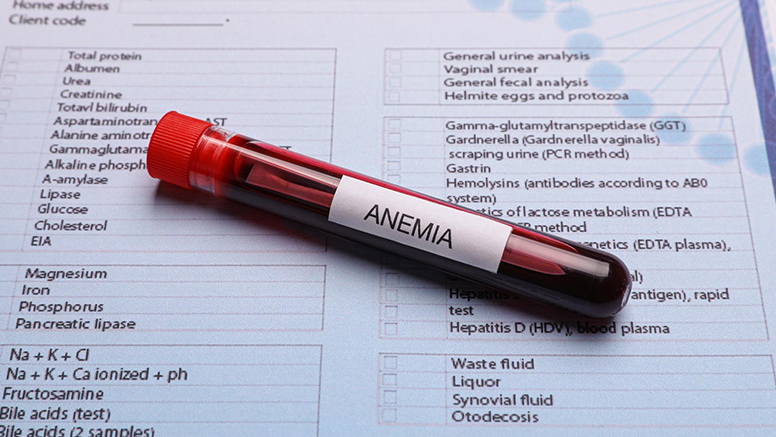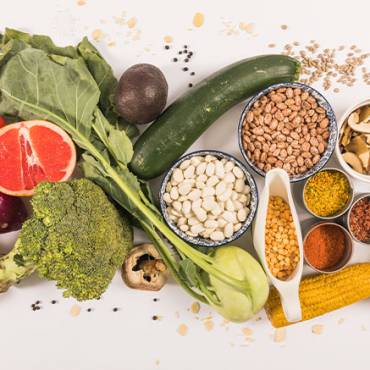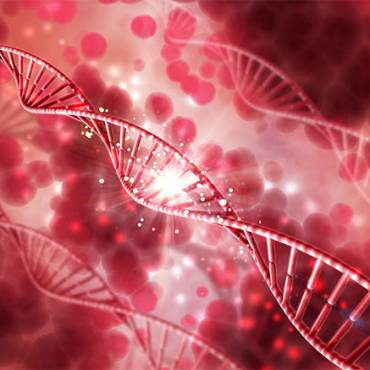Anemia is one of the most widespread public health problems throughout the world. Anemia develops through ineffective erythropoiesis (when the body makes too few red blood cells), haemolysis (when red blood cells are destroyed) and blood loss. Nutritional deficiencies, diseases and genetic haemoglobin disorders are the most common contributors to anemia. Understanding the different types can help to recognize the symptoms and to avoid anemia in the first place. There are several types of anemia which includes:
Iron-deficiency anemia
Iron-deficiency anemia is a type of anemia that develops if you do not have enough iron in your body. It is the most common type of anemia. People with mild or moderate iron-deficiency anemia may not have any symptoms. The most common symptoms of iron-deficiency anemia include tiredness, shortness of breath, or lethargy (lack of energy). Other symptoms include fatigue, dizziness, cold hands and feet, pale skin, headache, and pica (a desire to eat non-food items, such as ice, paper or clay).
Vitamin-deficiency anemia
Vitamin-deficiency anemia is a condition that develops when the body cannot make enough healthy red blood cells because it does not have enough vitamin B12 or folate (folic acid). With this condition, you may have the typical symptoms of anemia at first, such as fatigue, paleness, shortness of breath, headaches, or dizziness.
Haemolytic anemia
Haemolytic anemia is a blood condition that occurs when red blood cells are destroyed faster than they can be replaced. Symptoms may include tiredness, dizziness, weakness, and a spleen or liver size larger than normal. There are multiple causes of hemolytic anemia, including inherited and acquired conditions such as infection, autoimmune conditions.
Aplastic anemia
This happen when the body stops producing an adequate amount of new red blood cells. Aplastic anemia occurs due to bone marrow damage.
Sickle-Cell anemia
This type of anemia is genetic and inherited. Red blood cells, which are usually concave in shape, instead form in a sickle-like shape and often die within 10 to 20 days, compared with healthy red blood cells that live for 120 days.
Thalassaemia– This is also an inherited disorder caused by a gene mutation, which leads to low haemoglobin and red blood cell count.
Consult your doctor to know more.
[expand title=References]
1:Vives-Corrons JL. The Rare Anaemias. Rare Diseases. IntechOpen; 2020. This chapter is distributed under the terms of the Creative Commons Attribution License (http://creativecommons.org/licenses/by/3.0). The chapter has been taken from the Licensee Intech Open Book Rare Diseases and the content has been modified for its use on the platform. This is attributed Joan-Lluis Vives-Corrons and the original version can be found in the link http://dx.doi.org/10.5772/intechopen.86986. The Rare Anaemias. Rare Diseases.
2:AlDallal S (2016) Iron Deficiency Anemia: A Short Review. J Cancer Res Immunooncol 2: 106. This is an open-access article distributed under the terms of the Creative Commons Attribution License. The article has been taken from the Journal of Cancer Research and Immuno-Oncology and the content has been modified for its use on the platform. This is attributed to Salma AlDallal and the original version can be found in the link https://www.researchgate.net/publication/334892054_Iron_Deficiency_Anemia_A_Short_Review . Iron Deficiency Anaemia: A Short Review. J Cancer Res Immunooncol 2: 106.
3: Nutritional anaemias: tools for effective prevention and control. Geneva: World Health Organization; 2017. This work is available under the Creative Commons Attribution-NonCommercial-ShareAlike 3.0 IGO licence (CC BY-NC-SA 3.0 IGO; https://creativecommons.org/licenses/by-nc-sa/3.0/igo ).The original version can be found in the link https://www.who.int/publications/i/item/9789241513067.
[/expand]






